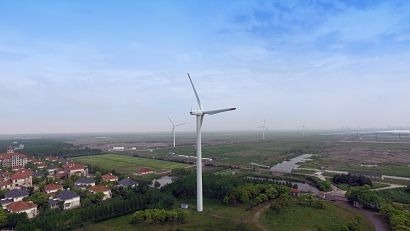
According to DNV's Energy Transition Outlook China, the country is establishing itself as a green energy leader with an unrivaled build out of renewable energy and export of renewable technology. On the other hand, DNV forecasts fossil fuels will still account for 40 percent of its energy mix in 2050.
Energy independence is a key motivation for Chinese energy policy, but it will be only partially achieved. The power sector is decarbonizing quickly by replacing coal with domestically sourced renewable energy, and domestically produced coal will largely be sufficient for the remaining coal demand segments by 2050. However, oil and gas usage will continue to rely on imports. Although oil consumption halves by 2050 from its 2027 peak, its use in petrochemicals and heavy transport (aviation and shipping) will remain lower and 84 percent of oil use will be met through imports. Natural gas consumption will remain high with 2050 consumption marginally below 2023 levels and 58 percent being imported.
Strong policy support is reflected by the rapid uptake of green technologies. China, already a leader in renewable energy investments, will more than quintuple renewable energy installations by 2050. In 2010, wind made up only 1 percent of China's electricity generation. However, policy has turbocharged the sector and currently wind is China's largest source of electricity after coal and hydropower, delivering 9.4 percent of the total electricity supply in 2023. By midcentury it will comfortably be the world's largest wind market.
Likewise, solar made up less than 1 percent of power generation in 2015 and in less than a decade this has risen to 5 percent currently. Solar and wind will each contribute 38 percent of electricity production by 2050.
“Intense policy focus and technological innovation is transforming China into a green energy powerhouse” said Remi Eriksen, Group President and CEO of DNV. “There is a lot to admire about China's energy transition. There are visible signs of a vast decarbonization effort and clean technology development within renewable energy, storage, and transmission technologies. However, there is potential for China to push further its transition to reduce its reliance on fossil fuels further and faster — and to bring China closer to net-zero emissions by 2050.”
China's energy use will peak by 2030 and reduce by 20 percent by 2050, driven by electrification and energy-efficiency improvements. This decline is also enabled by demographic shifts, including a projected 100 million population decrease.
From a position where, in 2023, China was responsible for a third of the world's energy-related CO2 emissions, by 2050 that share will have reduced to a fifth. In absolute terms, China's emissions will reduce by 70 percent, following a path close to meeting its goal of carbon neutrality by 2060.
For additional information:

